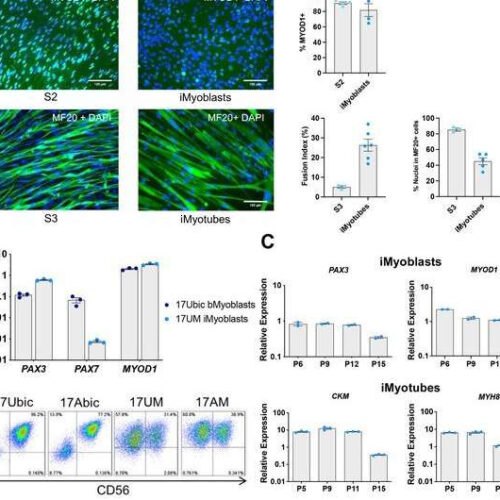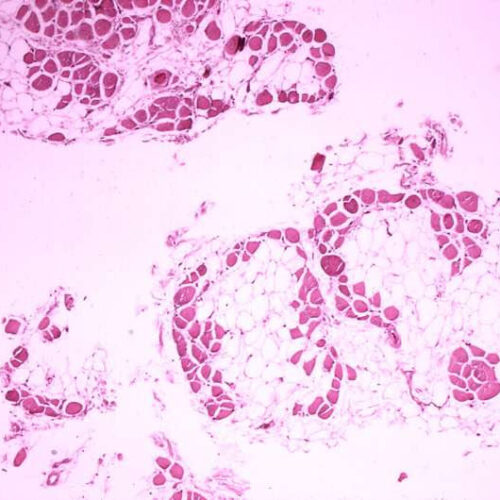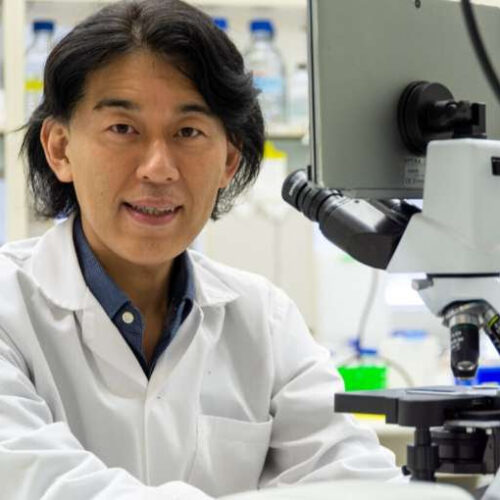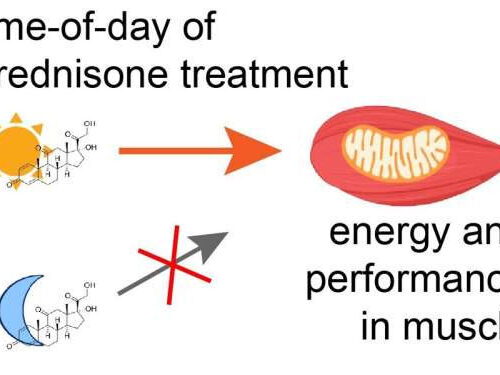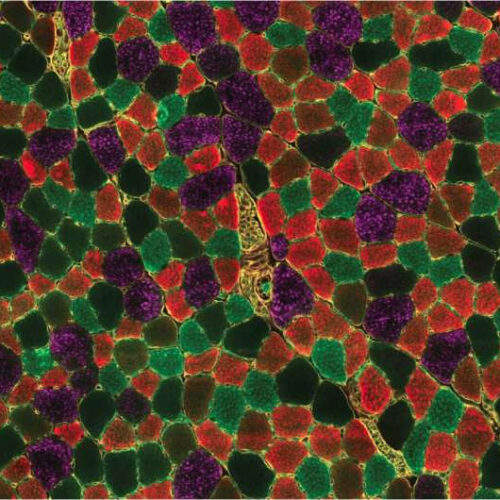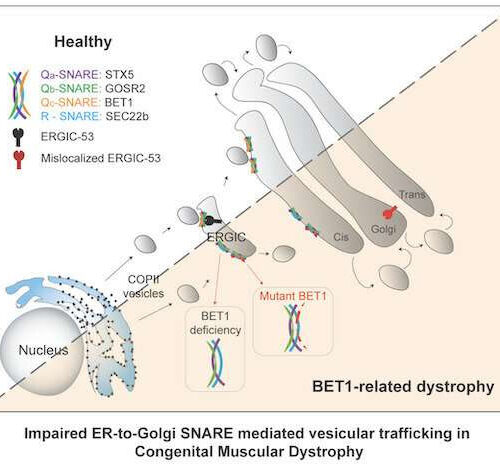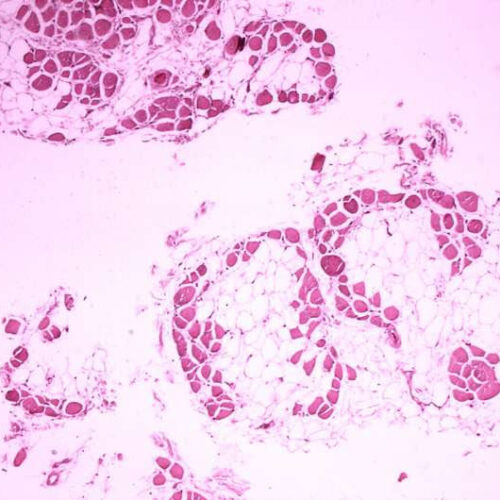by Jim Fessenden, University of Massachusetts Medical School Isolation and characterization of iMyoblasts. (A) Schematic of a three-stage transgene-free iPSC induction, iMyoblast reserve cell isolation, and iMyotube differentiation protocol. Images of S2 cells and iMyoblasts immunostained with MYOD1 antibody, and S3 iMyocytes and iMyotubes immunostained with MF20 myosin antibody. Nuclei are stained with DAPI. Scale...
Tag: <span>muscular dystrophy</span>
Cellular therapy improves signs and symptoms of Duchenne muscular dystrophy
by UC Davis Histopathology of gastrocnemius muscle from patient who died of pseudohypertrophic muscular dystrophy, Duchenne type. Cross section of muscle shows extensive replacement of muscle fibers by adipose cells. Credit: Public Domain A clinical trial at UC Davis Health and six other sites showed that a cellular therapy offers promise for patients with late-stage...
New treatment could benefit up to 45 percent of patients with Duchenne muscular dystrophy
by Gillian Rutherford, University of Alberta Toshifumi Yokota led research to develop and test a new “cocktail” drug that may be beneficial for up to 45 per cent of patients with a common form of muscular dystrophy — a significantly higher proportion than currently available treatments. Credit: University of Alberta Up to 45% of patients...
Steroid treatments for Duchenne muscular dystrophy may depend on the clock
by Cincinnati Children’s Hospital Medical Center In mice, prednisone enhances muscle activities when once-weekly doses are given at the beginning of the day but not at the beginning of the night cycle. Credit: Cincinnati Children’s Each year, about 20,000 children are diagnosed with Duchenne muscular dystrophy, a rare genetic condition that causes progressive muscle weakness...
Biomarker Shows Promise for Potential Treatment of Facioscapulohumeral Muscular Dystrophy
IOS PRESS Amsterdam, February 15, 2022 – There is currently no effective treatment for facioscapulohumeral muscular dystrophy (FSHD), one of the most common neuromuscular diseases, which is caused by an abnormal expression of the transcription factor DUX4. Investigators have now identified a novel promising biomarker, interleukin-6 (IL-6), that correlates with the severity of FSHD. This has the...
Blocking sphingolipids counteracts muscular dystrophy
by Ecole Polytechnique Federale de Lausanne Staining of a skeletal muscle cross-section showing different types of muscle fiber in young mice. Green: slow-twitch fibers type I; Red: Intermediate fast-twitch fibers type IIA; Purple: Very fast-twitch fibers type IIB; Yellow: Laminin. Credit: Martin Wohlwend (EPFL) EPFL scientists have made the first link between muscular dystrophy and...
Human microRNA inhibits expression of pathogenic gene underlying facioscapulohumeral muscular dystrophy
by Nationwide Children’s Hospital Fig. 1: miR-675 targets the DUX4 ORF and 3′UTR. a RenLuc-DUX4-FL dual-luciferase reporter and CMV.H19 constructs, and U6.MIR675, H1.MIR675, U6.MIR675-3p, and U6.MIR675-5p miRNAs. RenLuc-DUX4-FL contains DUX4 ORF and 3′UTR sequences fused to Renilla luciferase after the stop codon. Exons 1–3 are indicated (Ex1,2,3). *SD5 indicates silent mutation of a cryptic splice...
New consensus care guideline will significantly improve quality of life for adults with Duchenne muscular dystrophy
IOS PRESS Amsterdam, December 9, 2021 – Many more adults with Duchenne muscular dystrophy (DMD) are living longer thanks to improvements in treatment, however international standards of care have not yet fully addressed the complex needs of these patients. The Adult North Star Network (ANSI) has developed a set of consensus-based recommendations designed to significantly...
Researchers identify a crucial gene that triggers congenital muscular dystrophy
by Bielefeld University Impaired vesicular transport in congenital muscular dystrophy CMD. Credit: DOI: 10.15252/emmm.202013787 For the targeted treatment of a disease, information is needed about the course of the disease at molecular and cellular level. This is also true for the group of muscle diseases that include congenital muscular dystrophies (CMD). Bielefeld scientists have been able...
New therapeutic molecule yields new hope for Duchenne muscular dystrophy patients
by University of Montreal Histopathology of gastrocnemius muscle from patient who died of pseudohypertrophic muscular dystrophy, Duchenne type. Cross section of muscle shows extensive replacement of muscle fibers by adipose cells. Credit: Public Domain A research team led by Nicolas Dumont, a researcher at CHU Sainte-Justine and professor at the Université de Montréal, has discovered...

